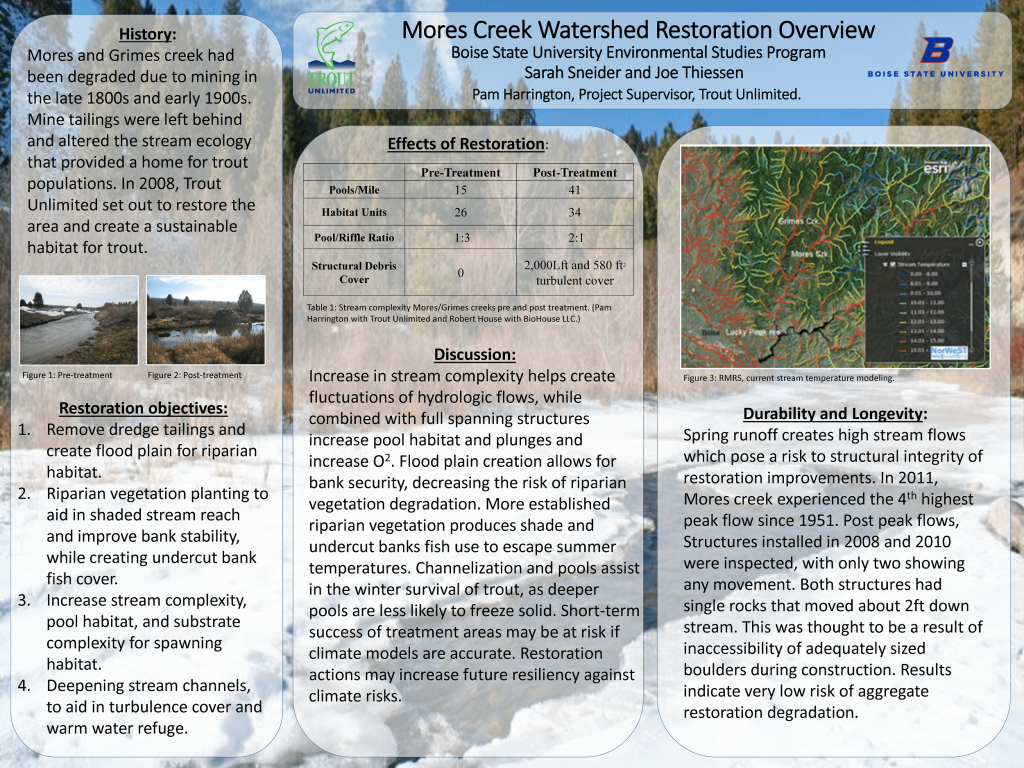Mores Creek Watershed Restoration Overview

Boise State University Environmental Studies Program
Sarah Sneider and Joe Thiessen
Pam Harrington, Project Supervisor, Trout Unlimited.
History
Mores and Grimes creek had been degraded due to mining in the late 1800s and early 1900s. Mine tailings were left behind and altered the stream ecology that provided a home for trout populations. In 2008, Trout Unlimited set out to restore the area and create a sustainable habitat for trout.
Restoration Objectives
- Remove dredge tailings and create flood plain for riparian habitat.
- Riparian vegetation planting to aid in shaded stream reach and improve bank stability, while creating undercut bank fish cover.
- Increase stream complexity, pool habitat, and substrate complexity for spawning habitat.
- Deepening stream channels, to aid in turbulence cover and warm water refuge.
Effects of Restoration
Stream complexity Mores/Grimes creeks pre and post treatment. (Pam Harrington with Trout Unlimited and Robert House with BioHouse LLC.)
Pools / Mile
- Pre-treatment: 15
- Post-treatment: 41
Habitat Units
- Pre-treatment: 26
- Post-treatment: 34
Pool / Riffle Ration
- Pre-treatment: 1:3
- Post-treatment: 2:1
Structural Debris Cover
- Pre-treatment: 0
- Post-treatment: 2,000 Lft and 580 ft2 turbulent cover
Discussion
Increase in stream complexity helps create fluctuations of hydrologic flows, while combined with full spanning structures increase pool habitat and plunges and increase O2. Flood plain creation allows for bank security, decreasing the risk of riparian vegetation degradation. More established riparian vegetation produces shade and undercut banks fish use to escape summer temperatures. Channelization and pools assist in the winter survival of trout, as deeper pools are less likely to freeze solid. Short-term success of treatment areas may be at risk if climate models are accurate. Restoration actions may increase future resiliency against climate risks.
Durability and Longevity
Spring runoff creates high stream flows which pose a risk to structural integrity of restoration improvements. In 2011, Mores creek experienced the 4th highest peak flow since 1951. Post peak flows, Structures installed in 2008 and 2010 were inspected, with only two showing any movement. Both structures had single rocks that moved about 2ft down stream. This was thought to be a result of inaccessibility of adequately sized boulders during construction. Results indicate very low risk of aggregate restoration degradation.